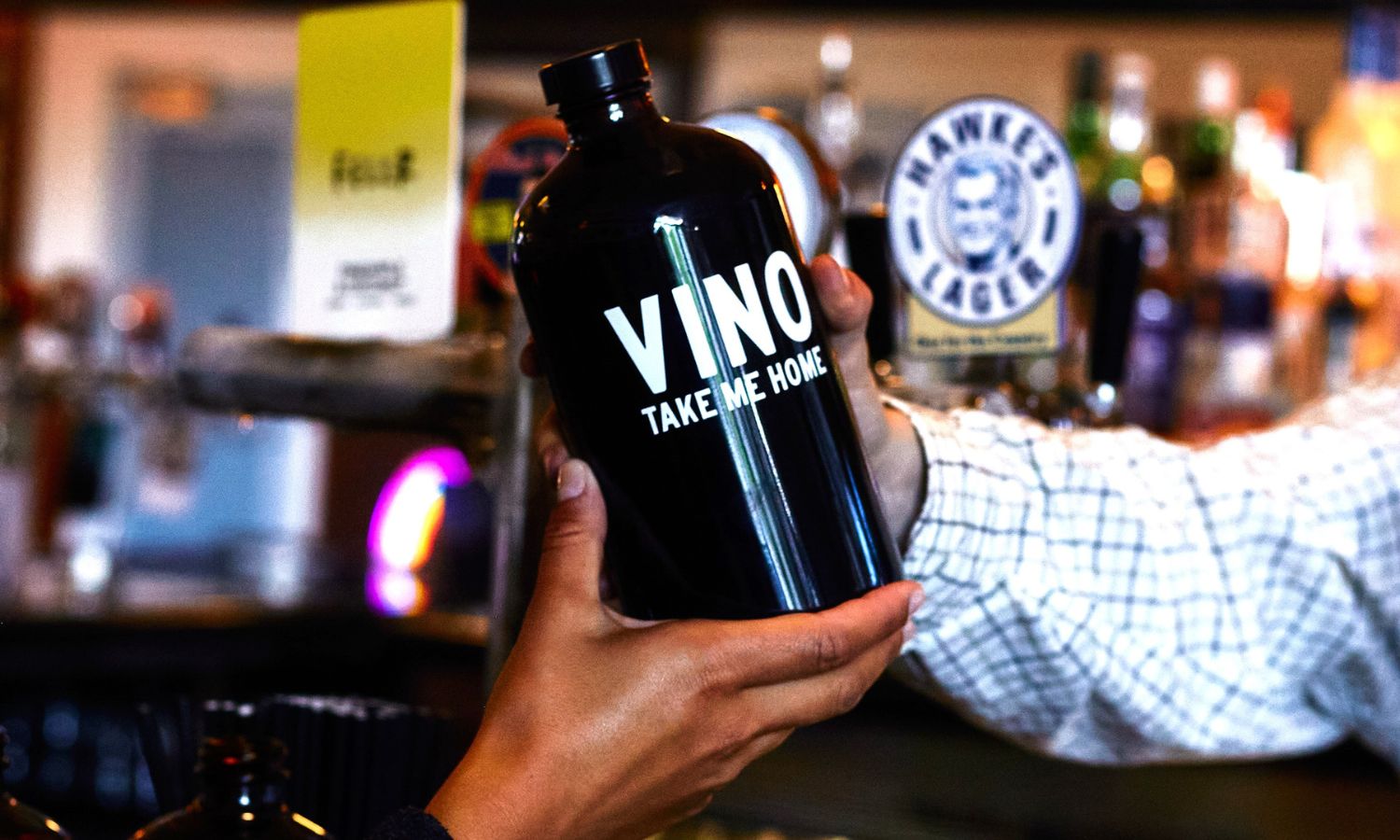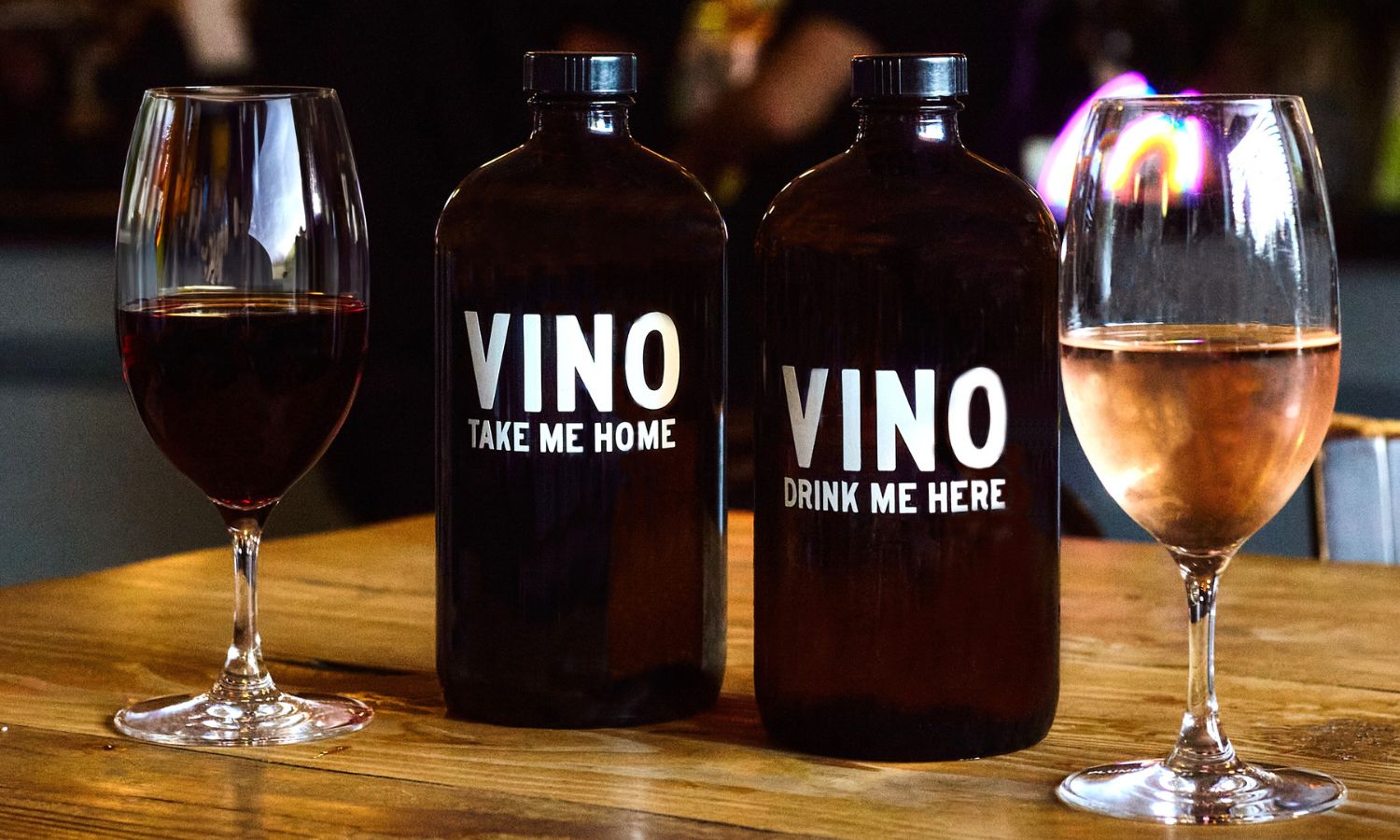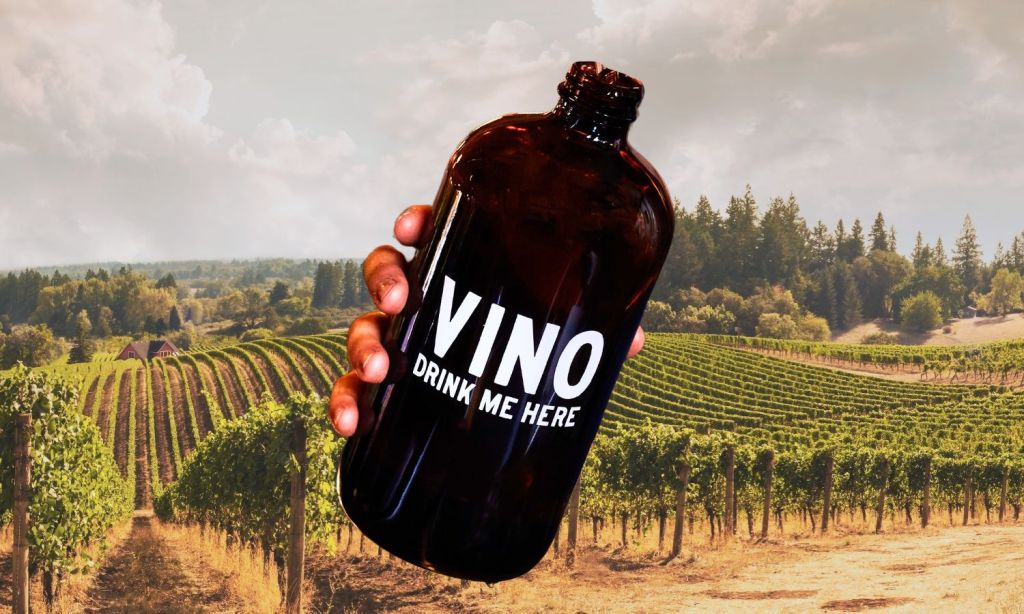Sydney’s wine scene is in constant flux; from chilled reds to skin-contact wines, our palates are evolving. What we like to sip is changing, so it was only a matter of time before the mode of obtaining our favourite wines also changed. Re-enter the era of wine squealers and refillable tap wines championed by Sydney establishments such as The Abercrombie, The Erko, and the Parisian wine bar and shop Lil Sis. These 1L reusable bottles are not just altering the way we experience wine — they’re ushering in a more sustainable drinking culture.
So, what exactly is a wine squealer? According to Reece Griffiths, Solotel Group bars manager, a wine squealer is a food-grade 1L bottle with a fully-sealed, air-proof closure. The dark brown glass is strategically chosen to limit UV light exposure, preserving the wine’s integrity. Griffiths explains, “We chose a 1L size as it’s perfect for sharing.” This notion of communal enjoyment sets the stage for a unique social aspect of wine consumption.
In comparison to the more familiar growlers, which hold 1.8L, squealers clock in at a more modest 925ml. Griffiths acknowledges this and explains, “We use a 1L size but thought the squealer name would be recognisable to anyone who has used one to take home craft beer before.” This familiarity bridges the gap between the craft beer culture and the emerging trend of tap wines.

The decision to introduce wine squealers is not arbitrary. Griffiths notes, “When we opened the Abercrombie, we started exploring how we could get high-quality, super interesting wines on tap.” The aim was to provide wines with high drinkability and minimal waste. By collaborating with established wineries like Alpha Box & Dice, The Abercrombie secures top-notch wines with zero waste for their customers.
The benefits of wine squealers extend beyond the taste. Griffiths highlights that due to the system they use, the wine has no interaction with oxygen, maintaining the freshness of the pour as if it were just uncorked. Additionally, customers can sample wines before purchasing, ensuring satisfaction.
“By refilling the squealers, we not only remove thousands of bottles from the waste cycle, but we also pass on a direct discount to the drinker,” he says.
From a broader perspective, refillable tap wines are part of a larger movement toward sustainability in the beverage industry. “For Solotel, sustainability is a huge focus for us, states Griffiths.” Refillable tap wines, much like their spirit counterparts, help reduce waste, cut emissions, and streamline logistics in the liquor supply chain.
However, the road to widespread adoption of this format may have some bumps. Griffiths acknowledges the historical perception of tap wine as low-quality and high-volume. Education becomes key, with a focus on showcasing the exceptional quality of wines available in this format. As he puts it, “The future is so exciting. We just need to get these wines in front of people so they can see how awesome they are.”
This concept has been a staple for Melburnians, at least for the past 20 years or so, if not longer. With over 20 venues in the city providing growlers, from longstanding favourites, including BeerMash, to newer additions like The Brew Barn, the trend is no longer a trend — it’s a lifestyle. There is a user-friendly online map pinpointing the places for growler refills and tap wines. Given the widespread adoption of this concept in a city like Melbourne, surely it’s a format that Sydney could easily embrace.

Lil Sis sommelier Zoe Brunton emphasises balance and variety when charged with selecting the wines for the bar and shop. The goal is to cater to diverse tastes, from classic styles like pinot grigio and grenache to more adventurous choices such as skin contact wines, she explains. “Monthly and seasonal rotations ensure a dynamic and ever-evolving selection.”
So, what has changed in the industry and consumer attitudes? Brunton attributes the shift to a combination of factors: increased environmental awareness, an understanding of sustainable practices, and a new generation of conscious drinkers. The popularity of growlers and squealers during lockdowns also played a role in normalising the concept, she says.
“With a focus on quality, sustainability, and community, these innovative vessels are poised to redefine Sydney’s drinking culture, one squealer at a time.”
Related: The Manhattan — Is the World’s Most Influential Cocktail Losing Its Swagger?
Related: The Unexpected Coolness of Tinned Fish
Read more stories from The Latch and subscribe to our email newsletter.







